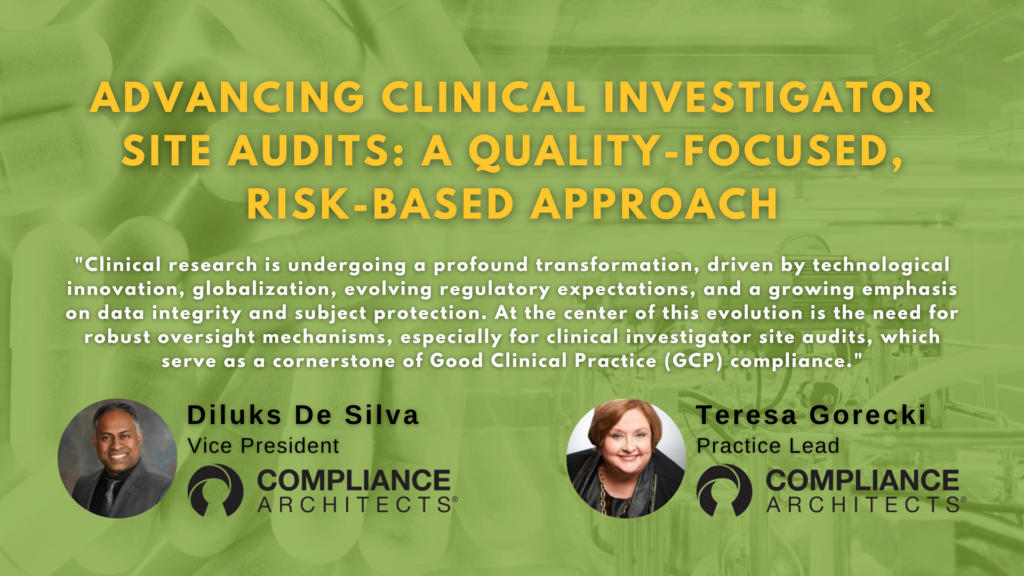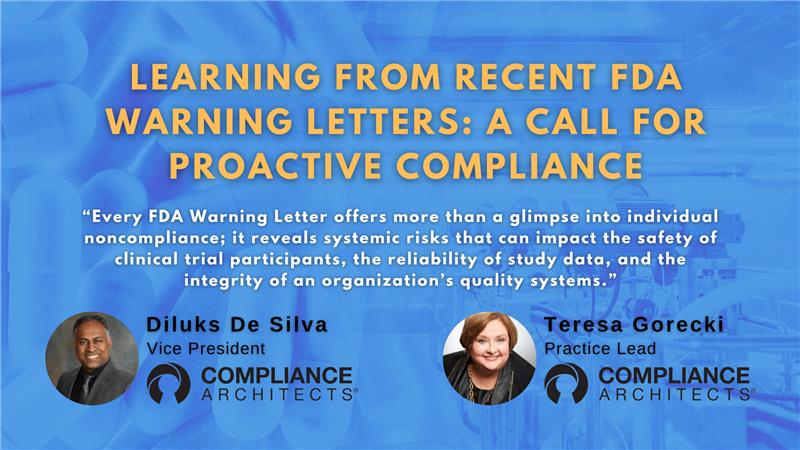“When everything is critical, nothing is.”
Author Unknown
When you think back on your career as a Quality & Compliance Executive, how many times have you felt you had a manufacturing operation that was prepared – truly prepared – and ready for an FDA inspection? Your walkthrough showed that the plant floor was immaculate. Design controls were thorough.
Batch records were robust and filled out properly. CAPAs were completed on time, and rigorously investigated. All the calibration stickers were within their recalibration date. Training records were complete and tied to job descriptions. SOPs were updated. Even the receptionist was all set with whom to call and what to do when the Investigator arrived!
Things were set! Everything was going to go great. You could just visualize your pride when you conveyed to the company President that you had not received an FDA 483. Oh, that was going to be great – and even better, your bonus tied to enforcement metrics was secure.
And then comes the day when the Agency shows up. The FDA looks at none of the things you were hoping they would look at – they looked at all these other things – unimportant things in your opinion – that had deficiencies. They seemed to zero in on the things that would make you look bad!
What happened? Why are they looking at those things – they really aren’t that important – we build great product – consistently. We have operators that have been here 25 years. They know the product backward and forward – what makes it tick. Our quality performance is good. No recent recalls. Now we have an extensive FDA 483 and we appear worse than we are! What in the H*LL happened?
HACCP: A Methodology for Defining Criticality
What happened is very simple: when everything is critical, nothing is, and the reverse is true: when nothing is critical, everything is! Applying this principle in the context of FDA inspections, if you can’t convey to the Agency what is critical, and what isn’t, then your operation had better be perfect – no failures, no deficiencies, nothing wrong – because perfect is what they will expect, and we all know perfect is a very, very difficult standard to ever meet, much less consistently maintain!

There is, however, an approach – a mature quality methodology – that has been around for many years that can help FDA-regulated industry with this all-too-frequent and vexing problem. Known best by the acronym HACCP, or Hazard Analysis and Critical Control Point, this methodology, developed by Pillsbury in the 1960s for the space program, is robust, flexible, and well established.
Using HACCP methodology (or rather, an expansion upon traditional HACCP) a quality and compliance organization can develop product-specific quality plans, regardless of the simplicity or complexity of the product being manufactured, that tell the story of criticality, and can help address the situation presented.
At present, traditional HACCP is widely used in the US food industry, and has been credited with significantly improving the safety of high-risk foods such as seafood and low-acid canned foods in the distribution chain to the consumer. In the context of regulated products’ manufacturing, HACCP can be expanded upon to very successfully provide improved inspection outcomes, improved operational outcomes, reduced operational costs, and a greatly overall improves state of control.
HACCP Quality Plans: A Framework for FDA Compliance Success
Process characterization; Demonstration of control; Essential product requirements; Critical to quality; Critical control points; Risk management.

What do these seemingly disparate concepts have in common? Together, they form a large portion of the foundation for current FDA thinking for post-approval quality expectations and basis for significant enforcement action. As borne out by inspection after inspection, the FDA expects you to know the following about pharmaceutical, medical device, biologics, dietary supplement and other FDA-regulated products and processes:
- What are the essential product requirements, i.e., what is important about this product?
- How is the product manufactured? What steps are involved?
- What steps and activities are critical in the manufacture of the product, or in other words, what manufacturing steps impact the essential product requirements?
- How does the operation control what’s critical? How can the operation demonstrate a state of control?
Most documents within a company’s existing quality system are designed to address compliance with FDA expectations concerning quality system elements such as CAPA, design control, training, CAL/PM, etc. These quality system elements are “product and process generic”, meaning, they are structured generally the same whether you are producing transdermals, capsules, aseptic fills, MRIs, tongue depressors, implantable devices, OTC ibuprofen tablets, etc.
As a result, our traditional quality system documents fail to address the foregoing questions within the context of a particular product. In addition, device master records, batch records and other traditional product build documentation are designed primarily to document activities after the fact. With a couple of possible exceptions, nowhere within most document systems do we maintain a document (or closely related set of documents) that provides a complete story with answers to the foregoing questions.
HACCP Quality Plans – an expansion on traditional HACCP – are developed through a multi-step process, beginning with the documentation of “essential product requirements.” This first part of our control story outlines all of the functions or characteristics that the product is supposed to exhibit. Sources of this information include product labeling, regulatory filings, promotional materials, product specifications, etc.
Following this step, the core of a HACCP Quality Plan can best be described as a supply-chain process decomposition. High-level flowcharts are developed that identify the top-level process steps. Each of these process steps are then successively “decomposed” into a series of sub-steps, down to a very low level of granularity. At the detail level, each step is analyzed to determine how that step could fail. Importantly, we are only concerned here with failures that can lead to impacts to the essential product requirements, as defined previously. Where a detailed sub-step can negatively impact an essential product requirement, we identify that step as a critical control point.
After critical control points are identified, the final and arguably most important part of the plan is the identification and documentation of the controls that have been implemented to ensure potential failures at these critical control points do not occur. Each critical control point is separately identified, and control schemes enumerated. Listing of multiple, differing, complementary control schemes that show how a process step is controlled is not found in any existing document set, and can convey a sense of confidence that an appropriate level of control is in place.
Finally, all of the foregoing information is consolidated into a controlled document – the HACCP Quality Plan. The HACCP Quality Plan document should be a living, breathing document – revised and updated as changes to the supply chain occur, to reflect the current state of manufacturing control. The document may then be used in many different ways, including:
- Defensively in an FDA inspection to demonstrate manufacturing in a “state of control”
- As the basis for a validation master plan (focused on critical control points)
- As a starting point for CAPA and other process failure investigations
- As justification for myriad quality system decisions, such as:
- Calibration & PM frequency
- HVAC and Environmental control programs
- Process validation requirements
- Training or procedural rigor
- As an orientation and training tool
The HACCP Quality Plan methodology benefits greatly from the incorporation of operational excellence techniques, most particularly in the identification of essential product requirements and critical control points. Familiar OpEx tools, such as Affinity Diagrams, CTQ Trees, FMEA, VOC, etc. can add considerable robustness to the underlying data presented within the HACCP Quality Plan. HACCP is not, however, OE. The primary objective of the HACCP Quality Plan is to tell a story – albeit an important one. Operational Excellence is a much broader concept that incorporates many different elements. HACCP Quality Plans can provide a great supplement to an OE-focused operation. Most importantly, the HACCP Quality Plan can provide a solid foundation for process improvement work.
HACCP Quality Plan concepts have not been embraced widely; however, the basic principles can be adapted to individual company needs, providing a high level of flexibility for the organization.
Contact Us
To find out more about how HACCP Quality Plans can cost-effectively benefit your FDA-regulated company, or, for assistance in reviewing your firm’s compliance and quality systems, please contact Compliance Architects® by filling out the form below.





